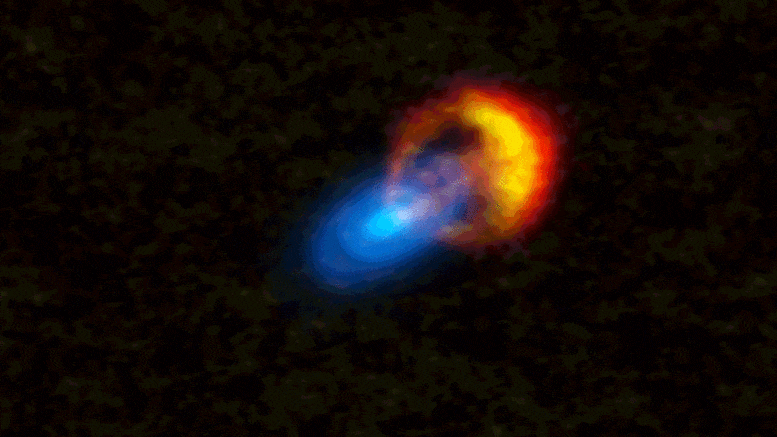
The star is host to a massive protoplanetary disk of gas and dust, one of the key elements to planet formation.
Scientists believe that Elias 2-27 may eventually evolve into a planetary system, with gravitational instabilities causing the formation of giant planets.
During observations, scientists confirmed that the Elias 2-27 star system — a young star located less than 400 light-years away from Earth in the constellation Ophiuchus — was exhibiting evidence of gravitational instabilities which occur when planet-forming disks carry a large fraction of the system’s stellar mass.“We found direct evidence for gravitational instabilities in Elias 2-27, which is very exciting because this is the first time that we can show kinematic and multi-wavelength proof of a system being gravitationally unstable.
Using gas velocity data, scientists observing Elias 2-27 were able to directly measure the mass of the young star’s protoplanetary disk and also trace dynamical perturbations in the star system.“We discovered in 2016 that the Elias 2-27 disk had a different structure from other already studied systems, something not observed in a protoplanetary disk before: two large-scale spiral arms.In addition to confirming gravitational instabilities, scientists found perturbations — or disturbances — in the star system above and beyond theoretical expectations.Cassandra Hall, Assistant Professor of Computational Astrophysics at the University of Georgia, and a co-author on the research, added that the confirmation of both vertical asymmetry and velocity perturbations — the first large-scale perturbations linked to spiral structure in a protoplanetary disk — could have significant implications for planet formation theory.“This could be a ‘smoking gun’ of gravitational instability, which may accelerate some of the earliest stages of planet formation.
“While gravitational instabilities can now be confirmed to explain the spiral structures in the dust continuum surrounding the star, there is also an inner gap, or missing material in the disk, for which we do not have a clear explanation.”.
One of the barriers to understanding planet formation was the lack of direct measurement of the mass of planet-forming disks, a problem addressed in the new research.“This finding lays the foundation for the development of a method to measure disk mass that will allow us to break down one of the biggest and most pressing barriers in the field of planet formation.Knowing the amount of mass present in planet-forming disks allows us to determine the amount of material available for the formation of planetary systems, and to better understand the process by which they form.”.
Although the team has answered a number of key questions about the role of gravitational instability and disk mass in planet formation, the work is not yet done.Our observational analysis paired with future in-depth analysis of Elias 2-27 will allow us to characterize exactly how gravitational instabilities act in planet-forming disks, and gain more insight into how planets are formed.”
“Spiral Arms and a Massive Dust Disk with non-Keplerian Kinematics: Possible Evidence for Gravitational Instability in the Disk of Elias 2-27” 17 June 2021, Astrophysical Journal“A Dynamical Measurement of the Disk Mass in Elias 2-27” 17 June 2021, Astrophysical Journal